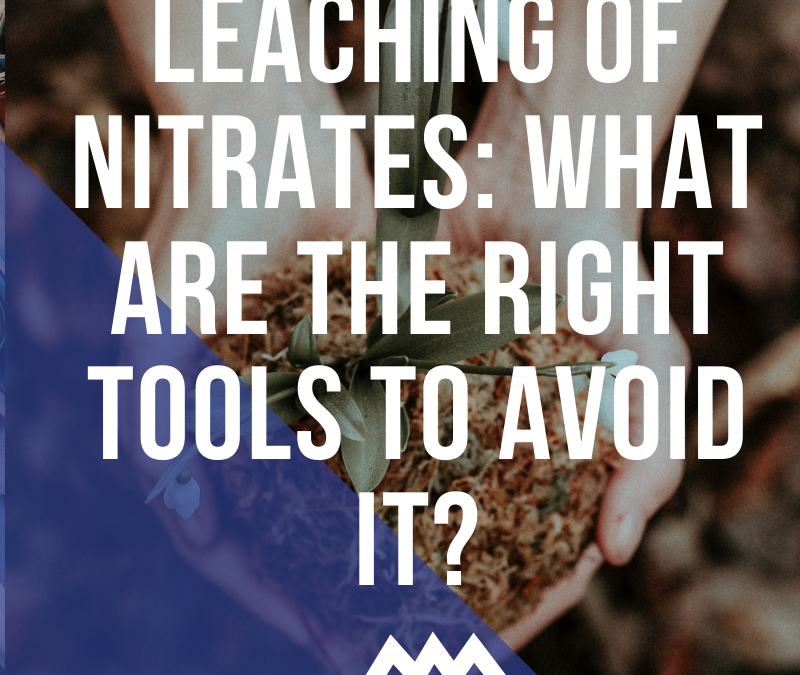Nitrogen is not in absolute terms a risk factor or insurance for a good and healthy product: like other nutritional elements such as potassium or calcium, nitrogen, in correct quantities, is essential for health and success. of agricultural production (eg nitrogen concimation).
Therefore, uncontrolled losses of nitrates in the soil and in the groundwater are at the same time a serious risk to the environment and human health and a production risk, because they may compromise the absorption of the right quantities of nitrogen.
In order to ensure a good harvest and a low human and environmental impact, a mix of good agronomic practices, technology and above all, data must be put in place!
What is nitrate leaching?
The phenomenon of nitrate leaching occurs when large quantities of free nitrate present in the outermost layers of the soil, are removed from the percolation water towards the innermost layers up to the groundwater (eg due to abundant rain).
This causes the uncontrolled pollution of the soil and the aquifer and a reduction of the amount of nitrogen available to the roots of the plant.
An environmental and productive damage!
The right mix to reduce the risk of leaching.
Reducing the risk of nitrate leaching is possible, all you need is the right tools to:
- monitor the amount of nitrogen in the soil,
- prevent percolation due to abundant rains and uncontrolled atmospheric events,
- aknowledge exactly the amount of nutrients that the crop needs, to avoid over-supply.
That’s what DEMETRA DSS Operating Group is going to do!
Technology
Companies involved in the DEMETRA project have made avaiable horticultural and fruit pilot crops on which agro-meteorological networks and sensors have been installed: technology is the fundamental element to monitor the conditions of the soil and the plant at all times and weather conditions.
Data
Agro-meteorological sensors, together with the chemical-physical analyzes carried out by the CNR-IRSA provide the fundamental data base for reducing the risk of leaching.
Data collected provide information about the health status of plants and bio-system, current concentration of nitrates and crop needs in terms of agronomic inputs (water and nutrients).
These important information can be consulted at any time by technicians and farmers directly on their devices, thanks to the DEMETRA DSS AZIENDALE application.
Agronomic practices
Data and technology are not enough to reduce the problem of nitrate pollution!
These represent the tools on which to build the last element of the mix: good agronomic practices.
Setting the correct irrigation strategy, deciding which nutrients to supply to the plant based on its crop needs and carrying out ‘precision’ fertilization are the actions with which farmers can stem the problem of nitrate leaching every day, optimizing production performance.



Recent Comments